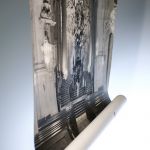
26 July – 30 August
The successful production from the previous year, Cavalieri’s Rappresentatione di anima e di corpo – with the Mozarteum Orchestra – relocated in 1969 to the Kollegienkirche, where it remained in the repertoire until 1973. It was the first time since 1922 that the Kollegienkirche was used again as a venue for the Salzburg Festival.
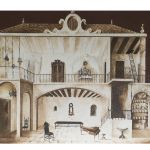
26 July – 30 August
During the climax of the student and civil rights movement, Salzburg celebrated the revival of the Baroque Theatre of the World with Emilio de’ Cavalieri’s Rappresentatione di anima e di corpo, likewise the Italian opera buffa.
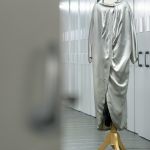
26 July – 30 August
Straight drama still had a hard time to vie with the dominance of the opera, which had a huge Cinemascope stage at its disposal in the Large Festival Hall. But the latter wasn’t suitable for straight drama productions.
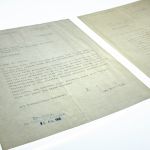
24 July – 30 August
After the première of Rudolf Wagner-Régeny’s Das Bergwerk zu Falun/The Mines of Falun after a text by Hofmannsthal, in 1961 the tradition of regular opera world premières was interrupted. In 1966, there was once more a world première of an opera: Christoph von Dohnányi and Gustav Rudolf Sellner premièred Hans Werner Henze’s The Bassarids.
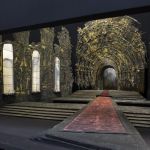
26 July – 31 August
In May 1964, Karajan had announced his resignation as director of the Vienna State Opera. In August of that year he became a member of the Board of Directors of the Salzburg Festival.
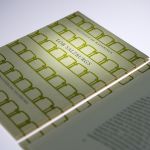
26 July – 31 August
For the first time, the Salzburg Festival was inaugurated with a ceremonial address. ‘International writers, thinkers and heralds of a world view will in future be called at the beginning to direct the message of their expectations towards Salzburg’.

26 July – 31 August
While many costume sketches have been preserved in the Archive of Salzburg Festival, historical materials and objects are kept in storage: besides costumes it holds old sewing equipment, pattern books, mannequin heads, shoe lasts, and this swatchbook with fabric patterns from 1963 on.
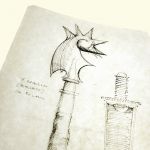
26 July – 31 August
In 1962, Salzburg mourned two artists whose work had had a great influence on the Festival in the past decades: Bruno Walter died on 17 February; before 1938 he had been one of the leading conductors of the Salzburg Festival and musical director of numerous opera productions. He was followed on 30 June by Caspar Neher. He had created a multitude of stage and costume designs since 1947.
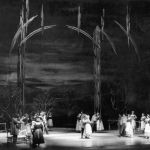
26 July – 31 August
Baron Heinrich Puthon, the Festival’s longstanding president who stepped down the preceding year, died on 23 April at the age of 91. The Grosses Festspielhaus was given over to spoken drama with a new production by Leopold Lindtberg of Goethe’s Faust, Part 1 – an experiment which, apart from performances of Jedermann during poor weather, was never repeated.
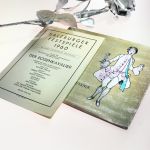
26 July – 30 August
The new Large Festival Hall – after plans by Clemens Holzmeister – was opened on the morning of 26 July 1960 with an official ceremony under the musical direction of Herbert von Karajan.
1960s
With the opening of the Large Festival Hall, the year 1960 marked a milestone in the history of the Salzburg Festival. It was inaugurated on 26 July as a third venue in the Festival District with an official ceremony and a new production of Richard Strauss’s Rosenkavalier/The Knight of the Rose conducted by Herbert von Karajan. Ever since, the auditorium has been able to seat around 2,200 people. The stage with its portal width of 30 and total width of 100 metres was unparalleled in dimensions at the time.
The Large Festival Hall was planned mainly for performances of the great 19th-century works of the operatic literature. Here, in the 1960s, Karajan performed Verdi’s Il trovatore (1962), Strauss’s Elektra (1964), Mussorgsky’s Boris Godunov (1965), but also Bizet’s Carmen (1966). In 1968, he ventured for the first time on a Mozart opera – Don Giovanni – in the Large Festival Hall.
The idea of a Large Festival Hall in place of the former archiepiscopal court stables first occurred as early as 1953; it was the brainchild of the architect Clemens Holzmeister together with the stage director Herbert Graf. At Holzmeister’s side Herbert von Karajan also contributed to the building’s concept. Between autumn 1956 and early summer 1960, the theatre building with the huge stage had been incorporated between the centuries-old façade of the court stables and the Mönchsberg. To make room, 55,000 cubic metres of rock had to be detonated. The building was mainly financed out of the Federal Government budget, which is why the Republic of Austria is the owner of the Large Festival Hall.
The other two venues were likewise adapted and extended in the 1960s. Already in 1960, Bernhard Paumgartner was lamenting the lack of an intimate theatre for Mozart in the Festival District, hence the ‘old’ Festival Hall was remodelled and reopened in 1963 as the Small Festival Hall. In 1969/70, the Felsenreitschule/Summer Riding School was equipped with understage, orchestra pit, audience stands and weatherproof rolling roof.
In 1960, Heinrich Baron Puthon retired from his office as Festival President; Paumgartner was his successor. The new man in charge of the drama department was the Artistic Director of the Burgtheater, Ernst Haeusserman. Even though Karajan no longer held the function of sole Artistic Director and became a member of the Board of Directors in 1964, all major decisions were still made by him. With three fully functioning venues and a changed top management team, the Salzburg Festival started into the new decade. It did not seem to be affected by the already perceptible shock waves of social upheaval. However, concurrently with the student and civic protests following the 1968 movement, a youth initiative started in Salzburg as well: the Salzburg ‘Scene’.
